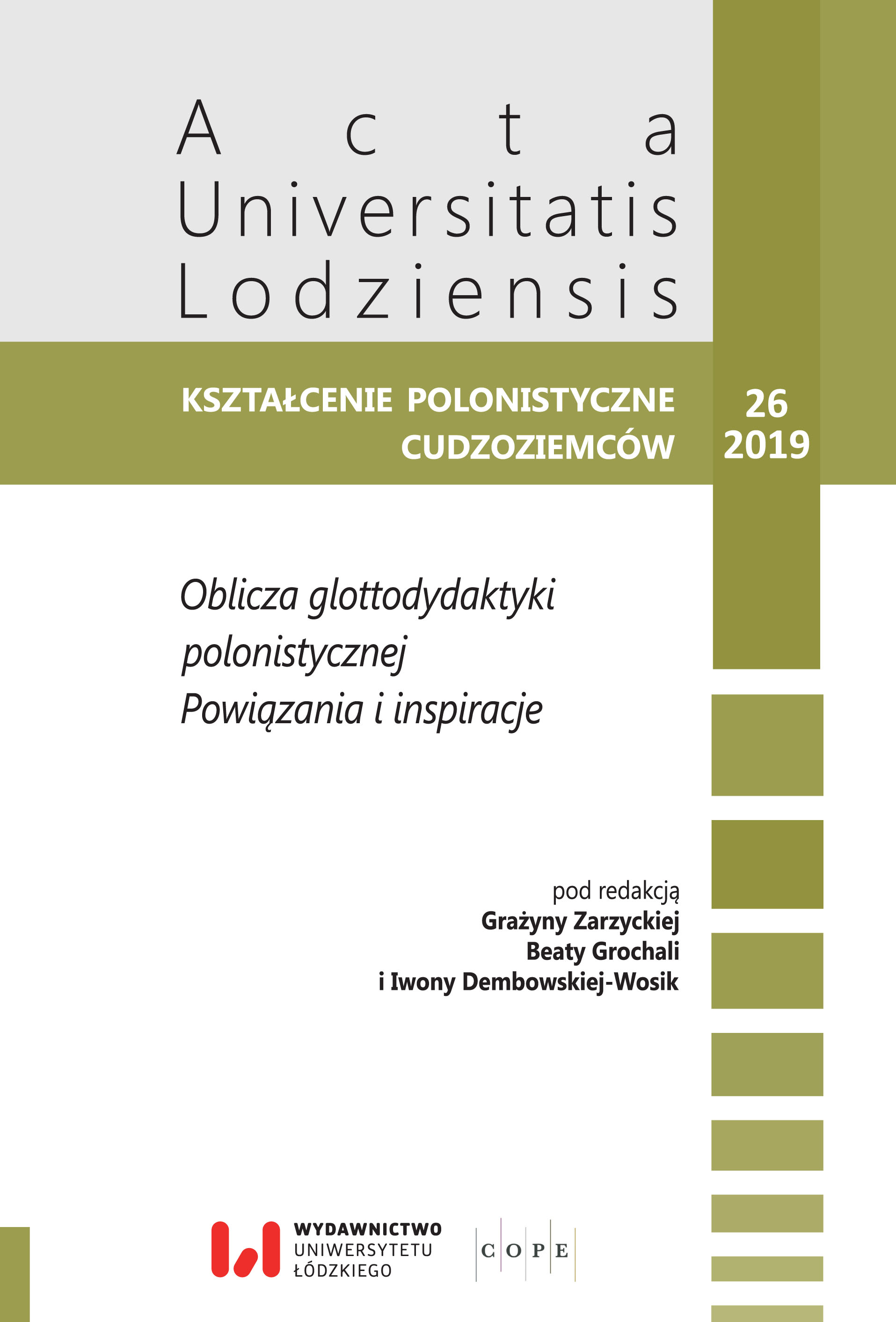Collocations of dimension adjectives with the names of human body parts in Polish and Korean
DOI:
https://doi.org/10.18778/0860-6587.26.23Keywords:
comparative semantics, adjectives of dimensions, names of body parts, collocations, conceptualisation of body parts and their dimensions, Polish language, Korean language, teaching a foreign languageAbstract
This article presents the results of comparative research into the collocations of the names of human body parts with dimension adjectives. The aim of the analysis was to indicate the similarities, limitations and differences in the manners of conceptualising the world established in Polish and Korean, or more precisely: how both languages define the elements of the world of human body parts, and how they assign dimensions to the elements depending on the needs and experiences of native users of both. The results of the research could have a practical application in teaching both languages, facilitating students’ absorption of the lexis of the other language, and result in a deeper mutual understanding of linguistic and cultural differences..
References
Achterberg F., 2000, «Wysocy» Polacy i «duzi » Niemcy. Porównanie znaczeń niemieckiego przymiotnika «hoch» i polskiego «wysoki», in: R. Grzegorczykowa & K. Waszakowa (eds.), Studia z semantyki porównawczej. Część I. Warszawa.
Google Scholar
Bąba S., Liberek J., 1994, O zwrocie «mieć długie zęby na co». Przyczynek do dialektologii społecznej, „Sprawozdania PTPN”, no. 107, part 2, Poznań, pp. 7–12.
Google Scholar
Bąba S., Liberek J., 2001, Słownik frazeologiczny współczesnej polszczyzny, Warszawa.
Google Scholar
Cheong B. K., 2002, Słownik polsko-koreański, Seoul.
Google Scholar
Drabik L., Sobol E., Stankiewicz, A., 2006, Słownik idiomów polskich PWN, Warszawa.
Google Scholar
Goddard C., 1998, Semantic Analysis, Oxford.
Google Scholar
Grzegorczykowa, R., Waszakowa, K. (eds.), 2000, Studia z semantyki porównawczej. Część I, Warszawa.
Google Scholar
Grzegorczykowa, R., Waszakowa, K. (eds.), 2003, Studia z semantyki porównawczej. Część II, Warszawa.
Google Scholar
Im H.G., 2008, Gwanyongeo pyohyeon sajeon, Seoul.
Google Scholar
Kang H. H., 2006, Korean Picture Dictionary, Seoul.
Google Scholar
Langacker R., 1995, Wykłady z gramatyki kognitywnej, Lublin.
Google Scholar
Lee I., Ramsey S. R., 2000, The Korean Language, “SUNY Series in Korean Studies”, New York.
Google Scholar
Linde-Usiekniewicz J., 2000, Przymiotniki wymiaru w połączeniu z nazwami części ciała w językach: polskim, rosyjskim, ukraińskim, szwedzkim, wietnamskim i japońskim, in: R. Grzegorczykowa, K. Waszakowa (eds.), Studia z semantyki porównawczej. Część I. Warszawa, pp. 167–194.
Google Scholar
Linde-Usiekniewicz J., 2003, Uwagi o pewnych niebezpieczeństwach związanych z kontrastywnym badaniem językowego obrazu świata, in: R. Grzegorczykowa, K. Waszakowa (eds.), Studia z semantyki porównawczej. Część II. Warszawa, pp. 357–370.
Google Scholar
Park Y. J., Choi G. B., 1996, Gwanyongeo sajeon, Seoul.
Google Scholar
Shaffer D., 2003, Five language visual dictionary, Seoul.
Google Scholar
Sohn H.-M., 1999, The Korean Language, in: S. R. Anderson et al. (eds.), “Cambridge Language Surveys”, Cambridge.
Google Scholar
Szymczak M., 1978, Słownik języka polskiego, Warszawa.
Google Scholar
The Heinle English / Korean Picture Dictionary, 2005, Boston, Singapore.
Google Scholar
Downloads
Published
How to Cite
Issue
Section
License

This work is licensed under a Creative Commons Attribution-NonCommercial-NoDerivatives 4.0 International License.










